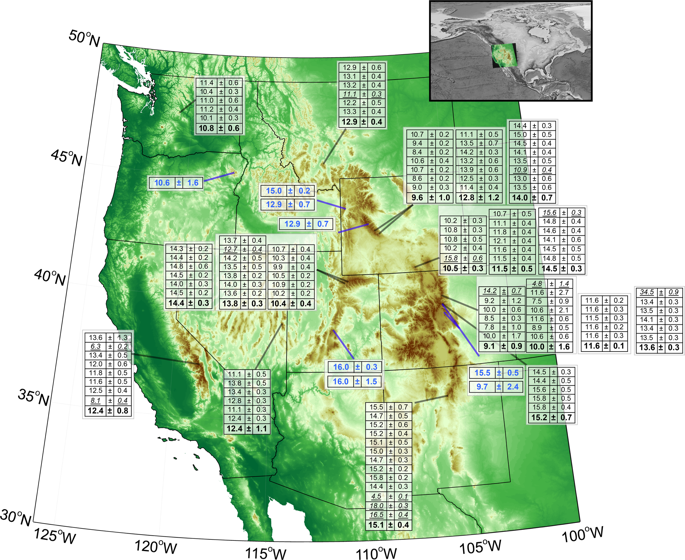npj Climate and Atmospheric Science ( IF 9 ) Pub Date : 2019-01-30 , DOI: 10.1038/s41612-019-0062-z Shaun A. Marcott , Peter U. Clark , Jeremy D. Shakun , Edward J. Brook , P. Thompson Davis , Marc W. Caffee

|
Well-dated records of alpine glacier fluctuations provide important insights into the temporal and spatial structure of climate variability. Cirque moraine records from the western United States have historically been interpreted as a resurgence of alpine glaciation in the middle-to-late Holocene (i.e., Neoglaciation), but these moraines remain poorly dated because of limited numerical age constraints at most locations. Here we present 130 10Be ages on 19 moraines deposited by 14 cirque glaciers across this region that have been interpreted as recording these Neoglacial advances. Our 10Be chronology indicates instead that these moraines were deposited during the latest Pleistocene to earliest Holocene, with several as old as 14–15ka. Our results thus show that glaciers retreated from their Last Glacial Maximum (LGM) extent into cirques relatively early during the last deglaciation, experienced small fluctuations during the Bølling–Allerød–Younger Dryas interval, and remained within the maximum limit of the Little Ice Age (LIA) advance of the last several centuries throughout most of the Holocene. Climate modeling suggests that increasing local summer insolation and greenhouse gases were the primary controls on early glacier retreat from their LGM positions. We then infer that subsequent intrinsic climate variability and Younger Dryas cooling caused minor fluctuations during the latest Pleistocene, while the LIA advance represents the culmination of a cooling trend through the Holocene in response to decreasing boreal summer insolation.
中文翻译:

10成为美国西部最新的更新世和全新世太阳剧团冰河时代的年龄限制
记录良好的高山冰川波动为了解气候变化的时空结构提供了重要的见识。历史上,来自美国西部的太阳冰ora记录被解释为中新世晚期(即新冰期)的高山冰川复活,但由于大多数地区的年龄年龄有限,这些冰rain年代仍然较差。在这里,我们介绍了由该地区14个圆形冰河冰川沉积的19个冰rain上的130个10 Be年龄,这些年龄被解释为记录了这些新冰期的进展。我们的10按年代顺序,相反,这些instead是在最近的更新世至最早的全新世期间沉积的,其中一些早于14-15ka。因此,我们的结果表明,冰川在最后一次冰消期间相对较早地从其最后冰川期(LGM)退缩到了太阳轮,在Bølling–Allerød–Younger Dryas区间经历了较小的波动,并保持在小冰期( LIA)在整个全新世的最后几个世纪中都取得了进步。气候模型表明,当地夏季日射量和温室气体的增加是冰川从LGM位置退缩的主要控制因素。然后,我们推断随后的内在气候变化和年轻的树精降温在最近的更新世期间引起了较小的波动,



























 京公网安备 11010802027423号
京公网安备 11010802027423号